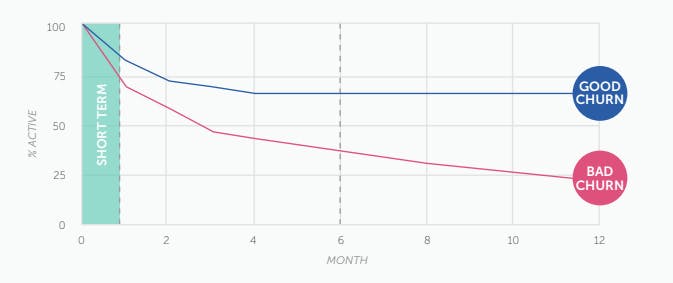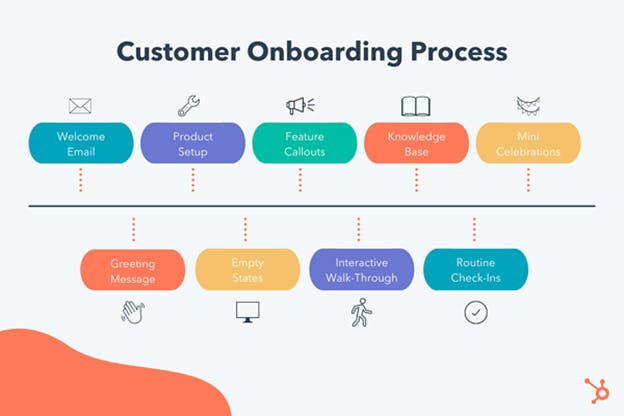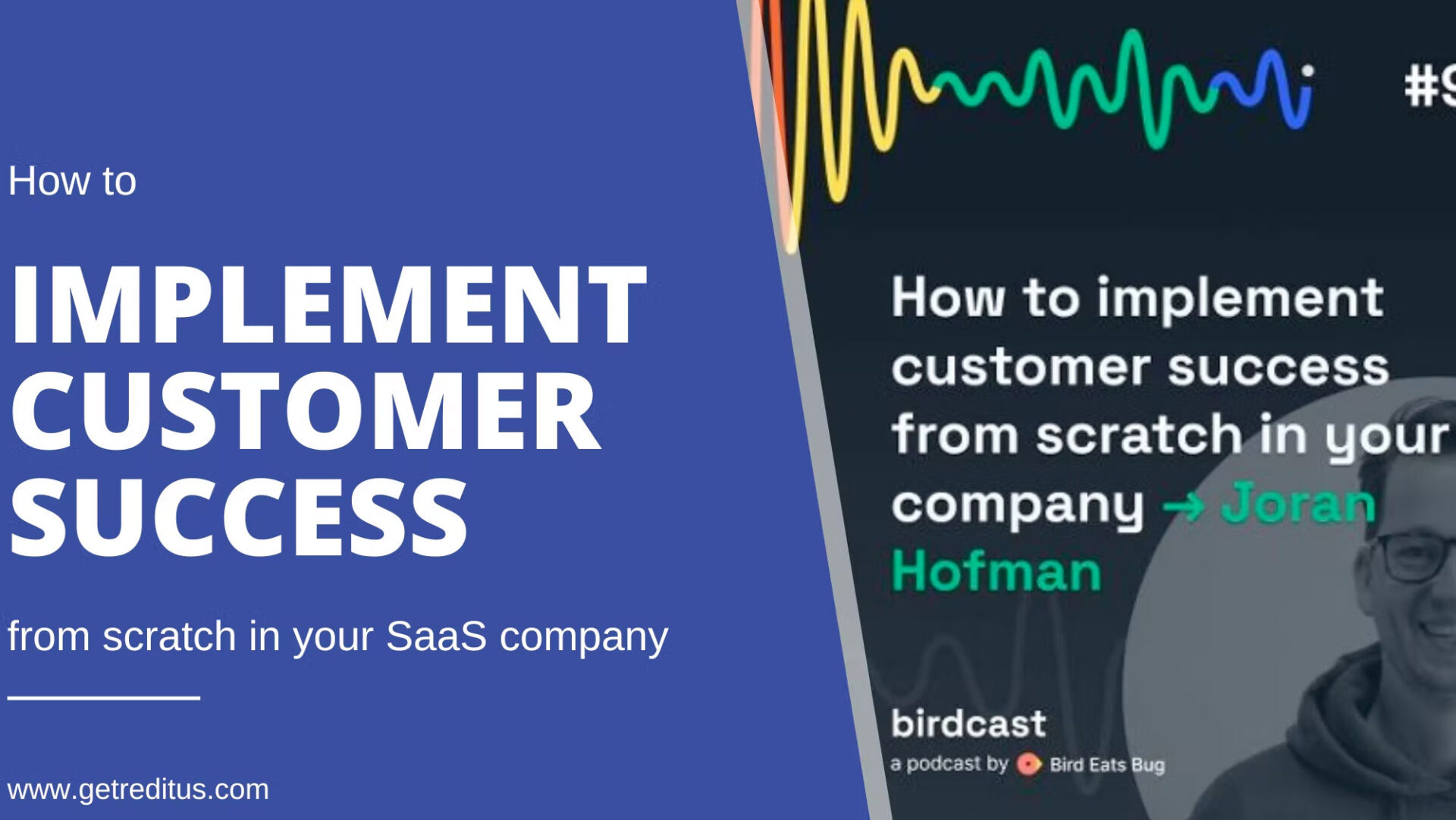How to Reduce Churn for Your SaaS: 6 Practical Strategies.

Are you tired of losing customers out the back door? Are you struggling to keep them from jumping ship in the first place? Churn is the silent killer of SaaS businesses. But you can do some things to reduce it.
In this article, we'll show you 6 effective ways to do it.
We'll also touch on what churn is, why it's essential to reduce it, and some common causes of high churn rates. Let's dive in.
Table of contents
What Is Churn?
Churn is the percentage of customers who cancel or don't renew their subscription to your service within a given time period.
For instance, if you had 100 customers in January and 10 of them canceled or didn't renew in February, your churn rate would be 10%.

Sometimes, churn is also expressed as a monthly recurring revenue (MRR) churn rate. This is the percentage of MRR that's lost each month due to customers' cancelations or non-renewals.
The higher your churn rate, the harder it is to grow your business. That's because you need to constantly acquire new customers just to offset the ones you're losing.
Why is Reducing Churn Important?
There are two main reasons why reducing churn should be a top priority for any SaaS business:
- Acquiring new customers is expensive: Depending on your industry, it can cost 5-10 times more to acquire a new customer than it does to keep an existing one. So, even a small decrease in your churn rate can have a big impact on your bottom line.
- Churn is a leading indicator of business health: Your churn rate is a good leading indicator of the overall health of your business. If it starts to increase, it's a sign that something is wrong and you need to take action.
Not paying attention to your churn rate is like driving with your eyes closed. You might be able to do it for a while, but eventually, you're going to crash.
Some other reasons why reducing churn is important include:
- Higher LTV: The lifetime value of a customer goes up the longer they stay with you
- More stability: Reducing churn can help you better predict and stabilize your revenue
- Improved employee morale: Churn can be frustrating for your team. Reducing it can help improve morale and motivation.
Ultimately, the goal is to keep your churn rate as low as possible.
Common Causes of High Churn Rates
There are lots of different reasons why customers might cancel their subscription to your service. But there are some common causes of high churn rates that are worth mentioning:
Lack of engagement: If customers aren't using your product, they're more likely to cancel. That's why it's important to keep them engaged with your service.
- Poor customer service: Customers expect to be treated well. If they're not, they're likely to take their business elsewhere.
- Complacency: If you're not constantly improving your product, customers will get bored and move on to something else.
- Pricing: If your prices are too high, customers will be more likely to churn. Make sure you're charging a fair price for your product.
- Accidental churn: This is when a customer cancels their subscription by mistake (e.g., the customer's credit card expires).
There are lots of other reasons why customers might cancel their subscriptions. But these are some of the most common ones.
6 Ways to Reduce Churn for Your SaaS Business
Now that we've covered what churn is and why it's important to reduce it, let's look at some ways to do it.
1. Improve Your Onboarding Process
Your onboarding process is key to reducing churn. It's your chance to set the right expectations for your customers and help them get the most out of your product.
Make sure your onboarding process is clear, concise, and easy to follow. And don't forget to include a way for customers to contact you if they have any questions.

For instance, you might want to consider using a tool like Appcues to help onboard your customers.
This type of tool can help you create a custom onboarding experience for your customers and make sure they're getting the most out of your product.
Depending on your business, you might also want to consider offering a free trial. This can be a great way to onboard new customers and give them a taste of what your product has to offer.
2. Help Your Customers Get Some Quick Wins
When customers first start using your product, they're looking for some quick wins. They want to see results quickly so they can justify the decision to subscribe to your service.
Sometimes, their boss or company might be putting pressure on them to show some results. So, it's important to help them get some quick wins.
One way to do this is to make it easy for them to accomplish their goals with your product. For instance, if they're trying to improve sales productivity, show them how to use your product to track their sales pipeline or create better sales reports.
If they're trying to improve customer service, show them how to use your product to create a knowledge base or automate customer support.
And if they're trying to improve their marketing, show them how to use your product to create better email campaigns or track their website's analytics.
Your goal is to help them accomplish their goals quickly and easily so they can see the value in your product.
Keep in mind that quick wins don't have to be big. They can be small successes that help your customers feel good about using your product.
3. Automatic Reminders and Check-Ins
Another way to reduce churn is to automate reminders and check-ins for your customers. This can help them stay engaged with your product and prevent them from forgetting about it.
Reminders can be sent through email, push notifications, or in-app messages. And they can be triggered based on customer behavior or milestones.
For instance, you might want to send a reminder to customers who haven't logged into your product in a while. Or, you might want to send a reminder to customers when their subscription is about to expire.
Check-ins can be a great way to proactively engage with your customers and make sure they're getting the most out of your product.
By checking in with them, you can offer assistance if they're having trouble using your product. You can also ask for feedback and suggestions on how to improve your product.
4. Yearly (or Long-Term) Contracts
If you're selling a yearly or long-term contract, you can reduce churn by giving your customers a discount. This can help them feel more committed to your product and less likely to cancel their subscription.
Evidence suggests that customers who are on a yearly contract are less likely to churn than those on a monthly contract.

Monthly contracts can be more expensive in the long run, and they make it easy for customers to cancel their subscriptions.
On the other hand, yearly contracts are a more significant investment for customers. And, they're more likely to stick with your product if they feel like they're getting a good deal.
For instance, you might want to offer a 10% discount for customers who sign up for a yearly contract. Or, you might want to offer a 20% discount for customers who sign up for a two-year contract.
The key is to find the right balance between giving your customers a discount and making sure you're still making a profit.
5. Prioritize the User Experience
There's no denying that a great user experience is key to the success of any software application. A study by Forrester found that a "poor" user experience was the number one reason why people stopped using an application.
So, if you want to reduce churn, you need to make sure your application is easy to use and provides a great user experience.
There are a few ways to do this:
- Make your application intuitive and easy to use: If your customers can't figure out how to use your product, they're going to get frustrated and eventually give up. So, it's important to make sure your product is easy to use and intuitive.
- Make your application responsive: A slow or unresponsive application can be a major turn-off for users. If your application takes too long to load or is difficult to navigate, users are going to get frustrated and look for a better option.
- Make your application visually appealing: A visually appealing application is more likely to engage users and keep them coming back. If your application looks dated or is difficult to look at, users are going to have a negative experience and may be less likely to use it.
6. Tap Into Gamification
Gamification is a great way to engage and motivate users. By incorporating elements of game-playing into your product, you can make it more fun and engaging for users.
And, when users are more engaged with your product, they're less likely to churn.
There are a few ways to add gamification to your product:
- Add points, badges, and leaderboards: Points, badges, and leaderboards can encourage users to keep using your product. They can also help create a sense of competition and community among users.
- Add rewards: Rewards are a great way to motivate users. You can offer rewards for completing tasks, achieving goals, or simply using your product on a regular basis.
- Add challenges: Challenges can help engage users and keep them coming back. By adding challenges to your product, you can encourage users to keep using it and strive to improve their performance.
Conclusion
Churn is a major problem for any software company. It's important to find ways to reduce churn in order to keep your business growing.
There are a few key ways to reduce churn:
- Improve your onboarding process
- Help your customers get some quick wins
- Automatic reminders and check-Ins
- Yearly (or Long-Term) Contracts
- Prioritize the user experience
- Tap into gamification
By implementing these strategies, you can reduce churn and keep your customers coming back.
In the end, happy customers are the key to a successful business. If you can keep your customers satisfied, they'll stick with you for the long run.

